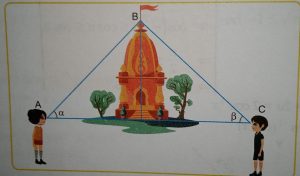EXERCISE 2.2
Prove the following:(Class 12 ncert solution math exercise 2.2)
Question 1: Prove ![]() .
.
Solution: Let ![]()
Hence, ![]()
Now,
![]()
![]()
![]()
![]()
![]()
=L H S
Question 2: Prove ![]() .
.
Solution: Let ![]()
Hence, ![]()
Now,
![]()
![]()
![]()
![]()
![]()
![]()
Question 3: Prove ![]() .
.
Solution: Since we know that ![]()
Now,
![]()
![]()
![]()
![]()
![]()
![]()
Question 4:Prove ![]() .
.
Solution: Since we know that
![]()
![]()
Now,
![]()
![]()
![]()
![]()
![]()
![]()
![]()
Question 5: Write the function in the simplest form: ![]()
Solution: Let ![]()
Hence,
![]()
![]()
![]()
![]()
![]()
![]()
![]()
Question 6: Write the function in the simplest form: ![]()
Solution: Let ![]()
Hence,
![]()
![]()
![]()
![]()
![]()
![]()
Question 7: Write the function in the simplest form: ![]()
Solution: Since, ![]()
![]()
Hence,
![]()
![]()
![]()
![]()
Question 8: Write the function in the simplest form: ![]()
Solution: ![]()
![]()
![]()
![]()
![]()
Question 9: Write the function in the simplest form: ![]()
Solution: Let ![]()
Hence,
![]()
![]()
![]()
![]()
![]()
![]()
Question 10: Write the function in the simplest form: ![]()
Solution: Let ![]()
Hence,
![]()
![]()
![]()
![]()
![]()
Question 11: Write the function in the simplest form: ![]()
Solution: Let ![]()
Hence,
Therefore,
![]()
![]()
![]()
![]()
![]()
![]()
![]()
![]()
![]()
Question 12: Find the value of ![]()
Solution: Since ![]()
Hence,
![]()
![]()
Question 13: Find the value of ![]() and
and ![]() .
.
Solution: Let ![]()
Hence,
![]()
![]()
![]()
![]()
Now, let ![]()
Hence,
Therefore,
![]()
![]()
![]()
![]()
![]()
![]()
![]()
![]()
Question 14: If ![]() , find the value of
, find the value of ![]() .
.
Solution: It is given that ![]()
![]()
![]()
![]()
![]()
![]()
Question 15: If ![]() , find the value of
, find the value of ![]() .
.
Solution: It is given that ![]()
Since ![]()
Therefore,
![]()
![]()
![]()
![]()
![]()
![]()
![]()
![]()
![]()
![]()
Question 16: Find the value of ![]() .
.
Solution: Since, ![]()
Therefore,
![]()
![]()
![]()
Question 17: Find the value of ![]() .
.
Solution: ![]()
![]()
![]()
![]()
![]()
Question 18: Find the value of ![]() .
.
Solution: Let ![]()
Then,
Therefore,
![]()
![]()
Now,
![]()
![]()
![]()
![]()
![]()
![]()
Thus, by using (1) and (2)
![]()
![]()
![]()
![]()
Question 19: ![]() is equal to
is equal to
(A) ![]()
(B) ![]()
(C) ![]()
(D) ![]()
Solution: ![]()
![]()
![]()
![]()
Thus, the correct option is B.
Question 20: ![]() is equal to
is equal to
(A) ![]()
(B) ![]()
(C) ![]()
(D) 1
Solution: Let ![]()
Hence,
![]()
![]()
![]()
![]()
Since, Range of principal value of ![]() .
.
Therefore,
Then,
![]()
![]()
![]()
=1
Thus, the correct option is D.
Question 21: Find the values of ![]() is equal to
is equal to
(A) ![]()
(B) ![]()
(C) 0
(D) ![]()
Solution: Let ![]()
Hence,
![]()
Therefore, ![]()
Now, let ![]()
Hence,
![]()
![]()
![]()
![]()
Since, Range of principal value of ![]()
Therefore,
Then,
![]()
![]()
![]()
Thus, the correct option is B.

